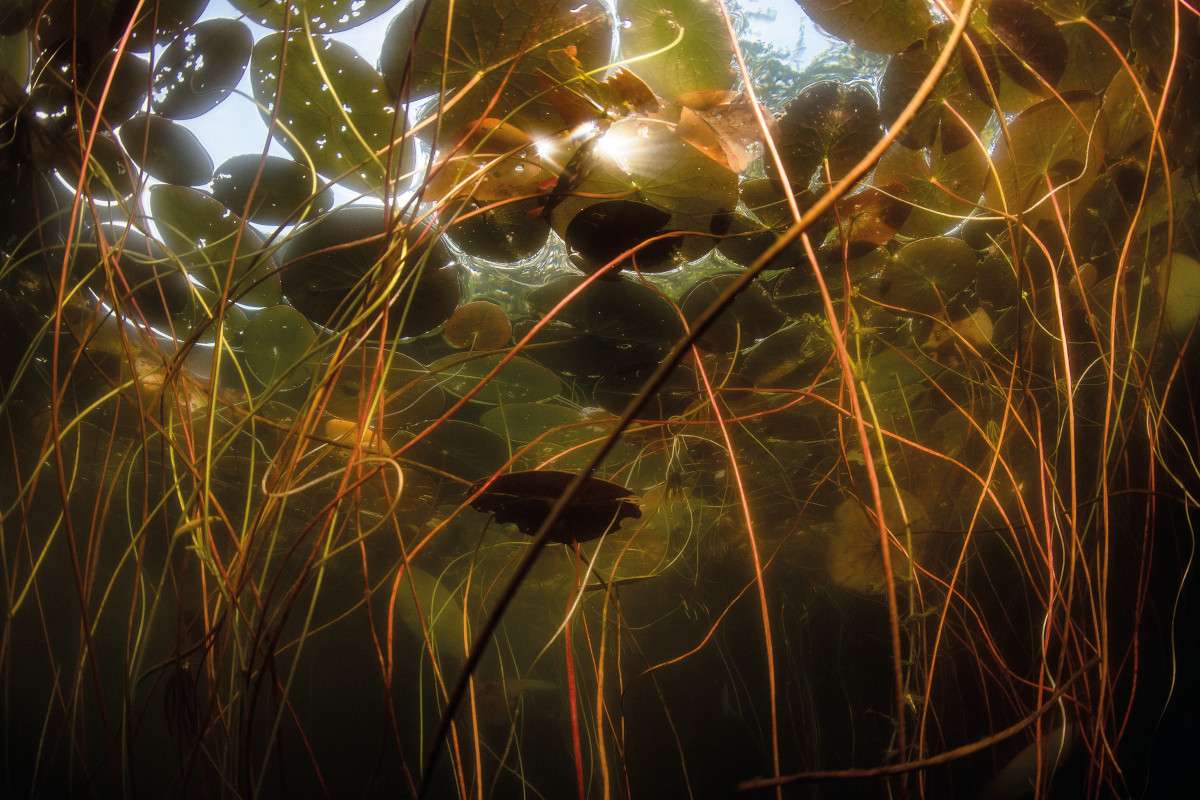
Ecoacoustics is being trialled in ponds and streams to search for any aquatic species that shouldn’t be there
By
The underwater world of a pond is a noisy place filled with strange whines, pops and chirps. These are sounds that few people have heard because, until fairly recently, nobody was listening.
Ecoacoustics is an emerging field that combines acoustics and ecology. It can be used to assess and monitor the biodiversity of an ecosystem by studying its soundscape. To date, most ecoacoustic research has focused on marine and terrestrial ecosystems, but Jack Greenhalgh, a freshwater ecology researcher at the University of Bristol, specialises in recording the surprisingly vibrant soundscapes of ponds.
Alongside the stridulations of aquatic insects, his recordings are packed with the low-frequency thrums made by fish, which produce the sounds by pulsating a drumming muscle that sits above their swim bladder, and the fizz of gas bubbles rising up from aquatic plants as they photosynthesise under the midday sun.
One particular type of creature interests Greenhalgh most of all. ‘I’ve been trying to record the sounds of crayfish so that I can try to attribute the sounds that I might be hearing in the soundscape to individual species – specifically the white-clawed crayfish and the signal crayfish,’ he says. The signal crayfish is an invasive US species that was introduced to the UK during the 1970s to be farmed for food. Since then, its numbers have exploded.
Invasive species, which often have no natural predators, can cause extensive economic and ecological damage to their new environments. As well as causing millions of pounds worth of damage to riverbanks by burrowing extensively, the signal crayfish brought with them a disease known as crayfish plague that is 100 per cent fatal to the whiteclawed crayfish. As a result, native populations have declined by more than 90 per cent in some counties.
One method used to control the spread of signal crayfish is trapping, but Greenhalgh says that this ‘only tends to catch adult crayfish and misses all of the really tiny crayfish that might be present in the environment’. Research on signal crayfish populations in upland streams in the Yorkshire Dales has shown that less than 2.5 per cent of all the signal crayfish recorded were actually large enough to be caught in conventional traps. The same study revealed huge densities of up to 110 crayfish per square metre in certain areas of upland streams, ecosystems that are particularly vulnerable to invasion due to their small scale. It’s here that Greenhalgh says ecoacoustics could work alongside other identification techniques to detect nascent crayfish populations.
Two species of crayfish – the Australian Murray crayfish and the red swamp crayfish, another widespread invasive species in the UK – have already been recorded and are known to make sound, suggesting that other species might do so, too. ‘If we are able to detect the sounds produced by the signal crayfish, then we might be able to spot these population advances a bit earlier than we otherwise would,’ says Greenhalgh, ‘and we would have a greater chance of actually being able to get rid of them.’




